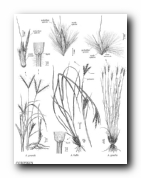

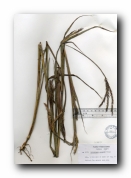

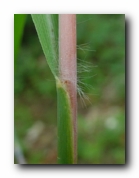
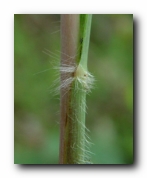
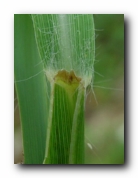
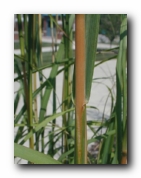
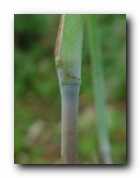
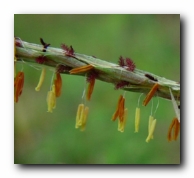
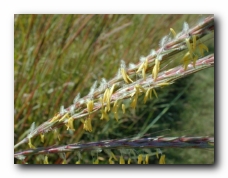
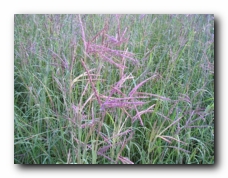
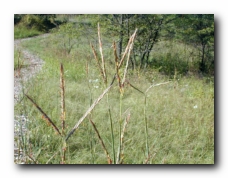
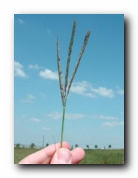
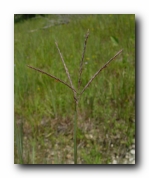
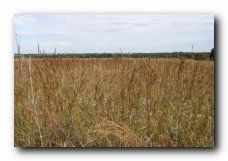
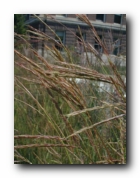
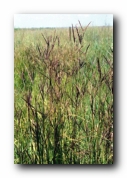
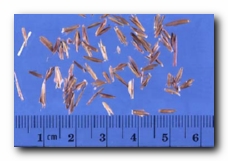
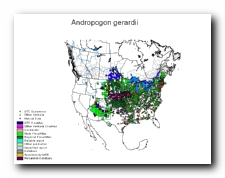
40" Rows: Broadcast:
2 pounds pure live seed per acre
6 pounds pure live seed per acre
Loam:
Clay:
Moderate
High
Moderate
Habit: Large, often glaucous perennial, usually in large clumps, sometimes with short rhizomes. Culms: Robust, 1-2 m. tall, in large tufts, sparingly branching from the upper nodes. Blades: Flat, elongate, 15-60 cm. long, 5-12 mm. wide, usually glabrous and smooth beneath, slightly scabrous above and somewhat hairy at the base, margins scabrous. Sheaths: Mostly shorter than the internodes, often glaucous, glabrous, or sometimes hairy, toward the base. Ligule: Membranous, about 3 mm. long, sometimes fringed. Inflorescence: Spikelike racemes on the long-exserted terminal peduncle, in 2's-6's, 5-10 cm. long, usually purplish, sometimes yellowish, rachis straight, the joints and pedicels hairy on the sides and at the base, bearing spikelets in pairs at each node, one sessile and perfect, the other pedicellate and staminate (occasionally perfect). Spikelets: Sessile spikelets 7-10 mm. long, lanceolate; pedicellate spikelet about as large, staminate, awnless. Glumes: Of fertile spikelet subequal, the first dorsally flattened, slightly grooved, usually scabrous with a strong nerve near each margin, the midnerve faint; second glume scabrous on the keel, glabrous to hispidulous, those of pedicellate spikelet similar. Lemma: Of sessile spikelet about as long as the glumes, hyaline, 2-toothed at the apex, bearing a bent spiral scabrous awn 7-18 mm. long; that of the pedicellate spikelet hyaline, awnless. Palea: Small, hyaline. Habitat: Prairies, plains, dry soil and open woods. July-September. Use: An important forage grass in the prairie and mixed prairie areas, especially abundant and valuable in the Flint Hills region. Synonyms: Andropogon chrysocomus Nash Andropogon furcatus Muhl. ex Willd. Andropogon gerardii Vitman var. chrysocomus (Nash) Fern. Andropogon provincialis Lam.
Special Notes:
Big Bluestem (Andropogon gerardii) Information #1
Big Bluestem (Andropogon gerardii) Information #2
Big Bluestem (Andropogon gerardii) Information #3
Big Bluestem (Andropogon gerardii) Information #4
Big Bluestem (Andropogon gerardii) Information #5